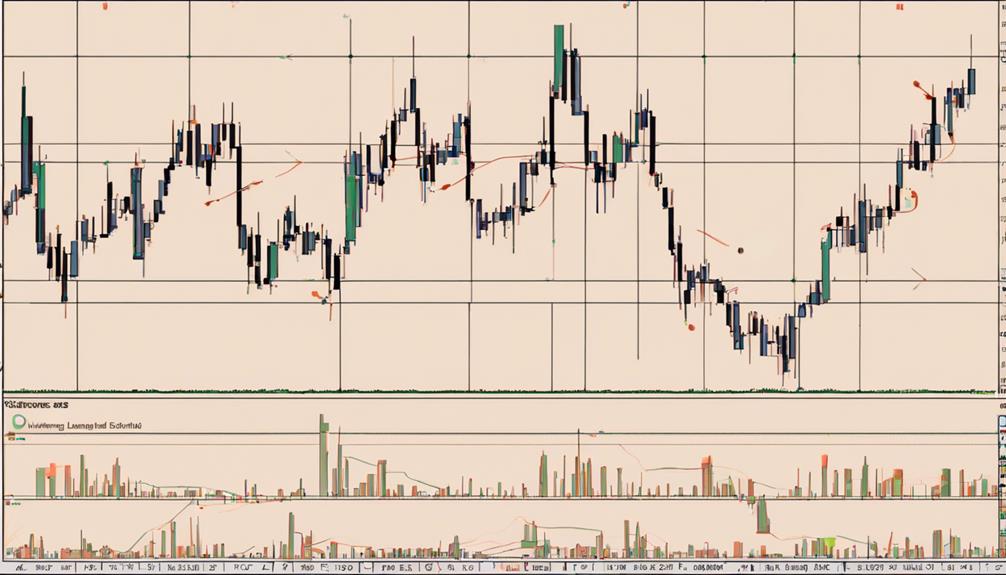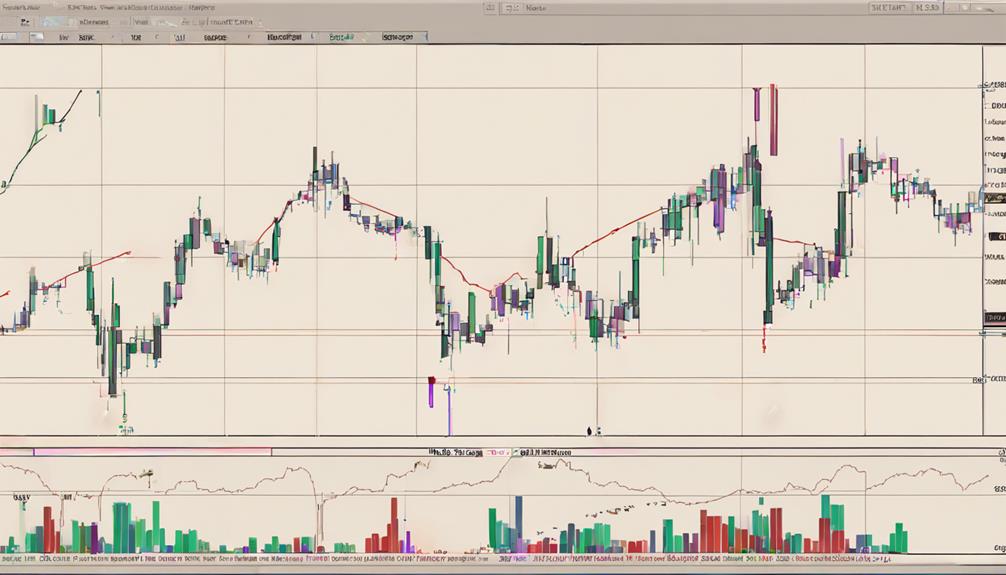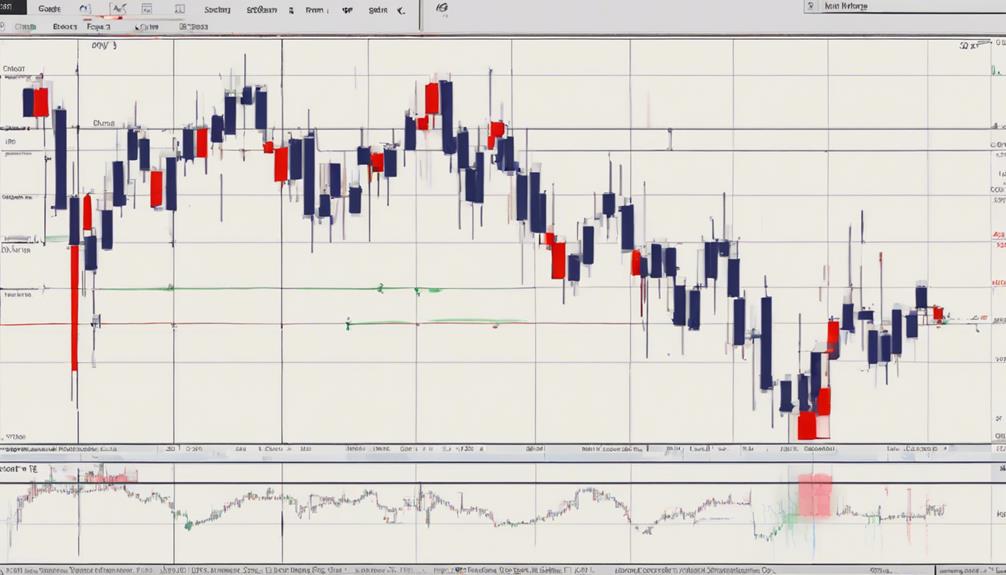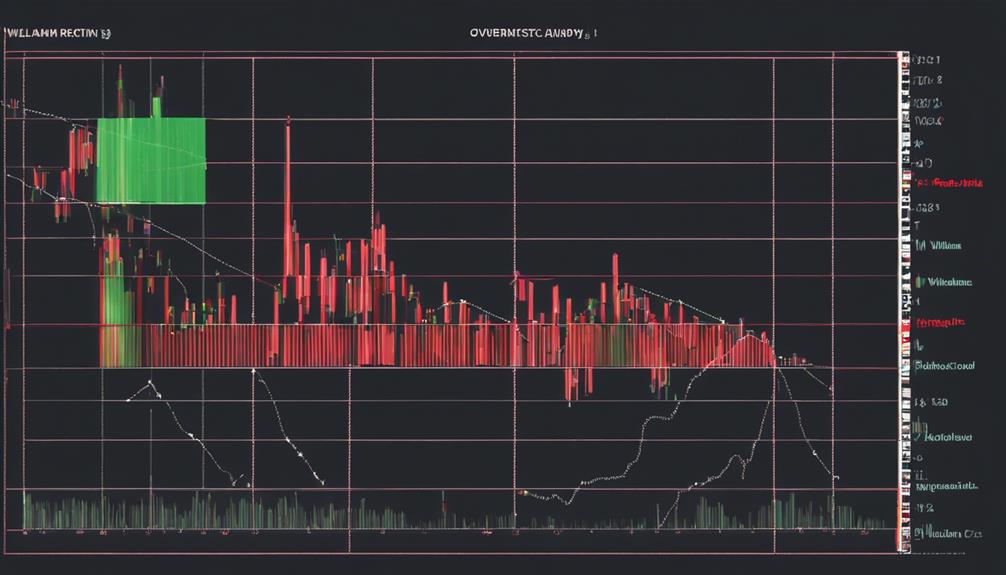Mastering the Williams %R indicator involves deep understanding of its calculation methodology and interpreting signals correctly for trend analysis. Advanced trading strategies emphasize identifying overbought/oversold conditions, anticipating reversals with divergences, and confirming trend strengths effectively. To enhance performance, combine Williams %R with other tools, avoid common mistakes like ignoring divergences, and adapt analysis across various timeframes. A holistic approach integrating analytical tools and confirming signals from different indicators improves decision-making precision and potential profitability in trading strategies.
Understanding Williams %R Calculation
The calculation of the Williams %R indicator, a pivotal tool in technical analysis, is derived from a formula that compares the highest high, lowest low, and closing price of a financial asset. This formula, ((Highest High – Close) / (Highest High – Lowest Low)) * -100, yields values between -100 and 0.
Williams %R is vital in trading as it provides insights into overbought and oversold conditions. By measuring momentum through the relationship between the closing price and the price range, it aids traders in gauging the strength of price movement. Setting thresholds at -20% for overbought and -80% for oversold levels, Williams %R helps in identifying potential trend reversals.
Understanding the Williams %R calculation is essential for traders seeking to make informed decisions based on technical analysis. By comprehending the nuances of this indicator, traders can gain a deeper understanding of market dynamics and potentially enhance their trading strategies.
Interpreting Williams %R Signals

Interpreting Williams %R signals involves recognizing overbought and oversold conditions, identifying divergences, and utilizing the indicator to confirm trend strength and anticipate reversals. Williams %R signals overbought conditions when above -20% and oversold conditions when below -80%.
Divergences in Williams %R can signal potential reversal points in the market. Bearish divergence occurs when there are higher highs in price and lower highs in %R, indicating possible weakness in the uptrend. On the other hand, bullish divergence presents lower lows in price and higher lows in %R, suggesting a potential reversal in a downtrend.
Traders use Williams %R along with other technical analysis tools to gauge trend strength and determine entry and exit points. By understanding these signals, traders can make informed decisions to capitalize on market movements effectively.
Advanced Trading Strategies With Williams %R

Utilize advanced trading strategies with Williams %R to enhance market analysis and improve decision-making processes. Williams %R can be a powerful tool for identifying overbought and oversold conditions within the market, indicating potential reversal points. By looking for divergences in Williams %R readings, traders can anticipate trend reversals before they occur. Additionally, using Williams %R across different timeframes helps in confirming trend strength and momentum. Incorporating support and resistance levels with Williams %R can further enhance the ability to pinpoint reversal points accurately. To increase the reliability of Williams %R signals, traders can confirm them with other technical indicators or patterns. This holistic approach to using Williams %R in conjunction with other tools can provide a more nuanced understanding of market dynamics and improve the overall quality of trading decisions.
| Williams %R Trading Strategies | Benefits |
|---|---|
| Identify overbought/oversold conditions | Pinpoint reversal points |
| Anticipate trend reversals | Confirm trend strength |
| Incorporate support/resistance levels | Enhance signals |
| Use with other technical indicators | Improve decision-making |
Avoiding Common Williams %R Mistakes

To navigate the intricacies of trading with the Williams %R indicator effectively, it is crucial to steer clear of common mistakes that can lead to suboptimal decision-making and potentially detrimental outcomes in the market. Misinterpreting extreme values such as -100 and 0 can result in incorrect trading decisions, while failing to take into account the overall market context may yield erroneous signals from the Williams %R Indicator.
Overlooking confirmation signals from other indicators can increase the risk of false signals, emphasizing the importance of holistic analysis. Not adjusting for varying market conditions and timeframes can impact the indicator's effectiveness, highlighting the need for adaptability. Ignoring divergences and trend confirmations may lead to missed opportunities for successful trades, underscoring the significance of thorough analysis when utilizing the Williams %R Indicator.
Enhancing Performance With Williams %R

Enhancing trading performance with the Williams %R indicator involves strategically combining multiple analytical tools to validate signals and improve decision-making accuracy. By understanding overbought and oversold conditions indicated by thresholds at -20% and -80%, traders can anticipate potential trend reversals.
Divergences in Williams %R, such as bearish and bullish divergences, offer valuable insights into price trend weaknesses or potential reversals. Confirming Williams %R signals with other technical analysis tools, like candlestick patterns and moving average crossovers, can enhance entry and exit points, especially in varying market conditions.
Incorporating Williams %R analysis across multiple timeframes aids in evaluating trend strength and identifying key reversal points. To optimize performance, traders should consider the signal reliability of Williams %R in conjunction with other indicators to develop robust trading strategies that adapt to evolving market dynamics.
Can the Williams %R Indicator be Used in Conjunction with the Bollinger Band Width Strategy?
Yes, the Williams %R indicator can be used in conjunction with the Bollinger Band Width strategy. By incorporating the Williams %R indicator into your stepbystep strategy for Bollinger Band Width, you can gain additional insights and confirmation for potential entry and exit points in your trading decisions.
Frequently Asked Questions
What Is the Best Setting for the Williams %R Indicator?
The ideal parameters for the Williams %R indicator typically involve a 14-day calculation period, striking a balance between responsiveness and smoothing. This setting is widely favored in technical analysis for its ability to provide reliable signals to traders.
Customizing this period may affect the indicator's sensitivity to price movements, impacting its effectiveness in identifying momentum shifts, overbought or oversold conditions. Traders often find the 14-day setting essential for effective trend identification and risk management.
What Is the Success Rate of the Williams Indicator?
The success rate of the Williams %R indicator in trading strategies can vary based on accurate interpretation of market conditions, historical data, and risk management practices. Traders analyze overbought and oversold conditions, trends, and volatility for improved success rates.
Backtesting results, indicator comparison, and continuous refinement of strategies are vital for enhancing profit potential. Combining Williams %R with other technical indicators can provide more accurate signals and better success rates in technical analysis.
How to Read Williams R Indicator?
Understanding signals from the Williams R indicator involves interpreting extremes to identify trends and utilize overbought/oversold levels in trading strategies. Comparing it with other indicators, analyzing price movements, exploring historical data, and incorporating it with moving averages can enhance its importance in making informed trading decisions.
Backtesting for accuracy is vital to validate its reliability in making informed trading decisions. Mastering the nuances of reading Williams R can provide valuable insights into market dynamics and potential trend reversals.
What Is the Difference Between RSI and Williams R?
RSI and Williams %R are both momentum oscillators used in technical analysis to gauge overbought and oversold conditions, price momentum, and potential trend reversals. RSI ranges from 0 to 100, while Williams %R ranges from 0 to -100.
RSI is smoother and less sensitive near extremes, making it suitable for identifying market trends, whereas Williams %R is more responsive to short-term price movements, providing traders with quicker signals for volatile market conditions.
Conclusion
To sum up, mastering the Williams %R indicator requires a deep understanding of its calculation and signals, as well as the ability to implement advanced trading strategies while avoiding common mistakes.
By enhancing performance with Williams %R, traders can potentially improve their success in the market. However, it is important to remember that even the most powerful indicators have limitations and should be used in conjunction with other tools for a well-rounded trading strategy.
